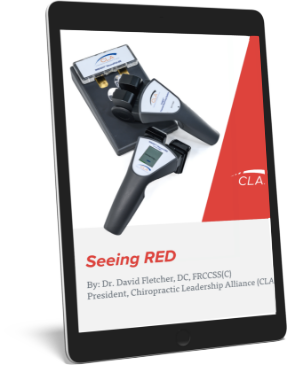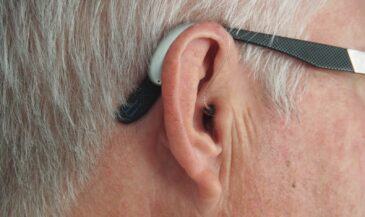Family chiropractic care provides a holistic approach to health, benefiting individuals of all ages, from newborns to seniors. Incorporating chiropractic techniques into family wellness plans can promote better posture, enhance nervous system function, and support overall well-being throughout life. By encouraging family members to engage in chiropractic care together, chiropractors can foster a culture of health that emphasizes prevention, maintenance, and the lifelong benefits of spinal health.
Incorporating family care techniques into your practice not only improves patient outcomes but also drives practice growth through increased referrals and retention. Families who experience the benefits of chiropractic care are more likely to continue their treatment and recommend it to others. This article explores various techniques for implementing family chiropractic care to achieve lifelong wellness.
Understanding the Importance of Family Chiropractic Care
Chiropractic care benefits individuals of all ages, but it is particularly effective when integrated into a family wellness plan. When the entire family is involved in chiropractic care, it becomes a part of their lifestyle, promoting better health outcomes for each member. The focus shifts from reactive treatment to proactive care, aiming to maintain health and prevent issues before they arise.
The Role of Chiropractic Care in Family Health
Chiropractic care supports the health of the nervous system, which is vital for proper communication between the brain and body. When nerve interference is minimized through regular adjustments, the body can function more efficiently. For families, this means addressing a wide range of health concerns, from improving posture in children to relieving stress and tension in adults.
How Family Chiropractic Care Drives Practice Growth
Encouraging family members to receive chiropractic care together leads to greater patient retention and increased referrals. Satisfied families are more likely to stay committed to their care plans and recommend your practice to others. This approach not only benefits individual patients but also contributes to a thriving practice.
Techniques for Incorporating Chiropractic Care Across All Ages
When providing chiropractic care for families, it is important to adapt techniques based on the age and specific needs of each family member. Different age groups have varying requirements for spinal health and nervous system support.
Chiropractic Techniques for Children and Adolescents
For children, chiropractic care focuses on supporting their growth and development. Techniques should be gentle and tailored to their smaller, more flexible bodies. Pediatric adjustments can help address issues such as poor posture, sports-related injuries, or difficulties with coordination and balance. Regular chiropractic visits can also support healthy nervous system function, which is critical during the formative years.
Care Techniques for Adults and Seniors
Chiropractic care for adults may focus on relieving stress, improving posture, or managing pain related to occupational or lifestyle factors. For seniors, care should emphasize maintaining mobility, preventing falls, and managing age-related spinal conditions. Gentle adjustments and techniques that consider bone density and joint health are essential for older adults.
Promoting Preventive Care and Early Intervention
One of the key benefits of family chiropractic care is the emphasis on preventive care and early intervention. When family members start receiving chiropractic care early, potential health issues can be identified and addressed before they become more serious.
The Benefits of Preventive Chiropractic Care
Preventive chiropractic care focuses on maintaining spinal health and reducing the risk of developing chronic conditions. By receiving regular adjustments, family members can keep their nervous system functioning optimally, which supports their body’s ability to heal and adapt to stress. This proactive approach leads to better health outcomes over time.
Identifying Issues Early Through Regular Chiropractic Check-Ups
Encouraging families to attend regular chiropractic check-ups helps identify any potential problems early on. For example, children may develop postural issues from carrying heavy backpacks or spending long hours on electronic devices. Regular adjustments can help correct these problems and prevent long-term consequences.
Implementing Wellness Strategies for Families
Family chiropractic care should extend beyond the adjustment table to include comprehensive wellness strategies. Chiropractors can provide guidance on lifestyle changes, exercises, and other practices that support the health of the entire family.
Incorporating Nutrition and Exercise into Chiropractic Care Plans
Educating families about the importance of proper nutrition and regular physical activity is essential for lifelong wellness. Chiropractors can offer nutritional advice and recommend exercises that strengthen the core, improve posture, and enhance overall health. These recommendations complement chiropractic adjustments and help maintain spinal health.
Stress Management Techniques for Family Health
Stress can affect individuals of all ages, impacting their nervous system and overall health. Incorporating stress management techniques into family chiropractic care plans, such as breathing exercises, mindfulness practices, or relaxation techniques, can help reduce the negative effects of stress on the body.
Educating Parents About the Benefits of Pediatric Chiropractic Care
Parents may not always be aware of how chiropractic care can benefit their children. It is essential to educate them on the advantages of pediatric chiropractic, such as supporting proper growth and development, improving sleep quality, and enhancing immune system function.
Addressing Common Concerns About Pediatric Chiropractic
Parents may have concerns about the safety and necessity of chiropractic care for their children. Use table talk to explain the gentle techniques used in pediatric chiropractic and how adjustments can support their child’s development. Provide objective data from tools like INSiGHT scanning technology to show parents the benefits of chiropractic care for their child’s nervous system.
Highlighting the Long-Term Benefits of Starting Early
Emphasize the importance of starting chiropractic care early in life. Explain how regular adjustments during childhood can lead to better spinal health in adulthood, helping to prevent issues such as chronic pain, poor posture, and nervous system dysfunction later in life.
Encouraging Maintenance Care for Lifelong Health
Maintenance care involves regular chiropractic visits that continue even after initial symptoms have been resolved. It is essential for families to understand that chiropractic care is not just for pain relief, but for supporting lifelong health.
The Importance of Ongoing Chiropractic Care
Explain to families how regular chiropractic adjustments can help maintain spinal health, support the nervous system, and prevent future issues. Highlight how maintenance care is similar to regular dental check-ups or eye exams—essential for keeping the body functioning at its best.
Setting Up Family Maintenance Plans
Offer family maintenance plans that include regular chiropractic visits for all members. These plans can be customized to suit each family’s needs, ensuring that everyone receives the appropriate level of care. By setting up maintenance plans, families are more likely to stay committed to their health and continue with their chiropractic care.
Fostering a Culture of Health and Wellness in Families
Encouraging a culture of health and wellness within families is an essential part of family chiropractic care. When chiropractic becomes a routine part of a family’s lifestyle, it promotes lifelong habits that lead to better health outcomes.
Educating Families on the Connection Between Chiropractic and Overall Wellness
Use table talk to explain the connection between spinal health, nervous system function, and overall wellness. Help families understand how chiropractic care supports their ability to perform daily activities, manage stress, and maintain a high quality of life.
Promoting Family Wellness Activities
Encourage families to engage in activities that promote wellness, such as family hikes, yoga sessions, or group sports. Chiropractic care complements these activities by keeping the body aligned and functioning optimally, making it easier for families to enjoy a healthy and active lifestyle.
Leveraging Family Care Techniques for Practice Growth
Family chiropractic care techniques not only benefit the individual patients but also contribute to practice growth. By providing comprehensive care for families, chiropractors can enhance patient loyalty and generate more referrals.
How Family Chiropractic Care Drives Referrals
Families who experience the benefits of chiropractic care are more likely to refer friends and extended family members to your practice. Use family-focused marketing strategies to encourage referrals, such as offering special rates for new family members or creating incentives for families who refer others.
Building Long-Term Relationships with Family Care
By offering family chiropractic care, you create long-term relationships with your patients. Families that receive consistent care from childhood through adulthood are more likely to stay loyal to your practice. Building these relationships helps secure a steady stream of patients and supports sustained practice growth.
Embrace Family Chiropractic Care for Lifelong Wellness
Family chiropractic care offers a unique opportunity to support the health and well-being of patients across all ages. By incorporating techniques that cater to different age groups and emphasizing preventive care, chiropractors can help families achieve lifelong wellness.
Promote a culture of health within families by making chiropractic care a part of their everyday routine. Use your skills to educate, engage, and inspire patients to embrace the benefits of lifelong chiropractic wellness.
Ready To Take the Next Step?
Discover how tools like INSiGHT scanning technology and the CORESCORE can help you grow your family practice.
Book a call with an INSiGHT Advisor today to learn how integrating these advanced tools will empower you to foster stronger relationships and drive growth through effective chiropractic communication.
































































































































































